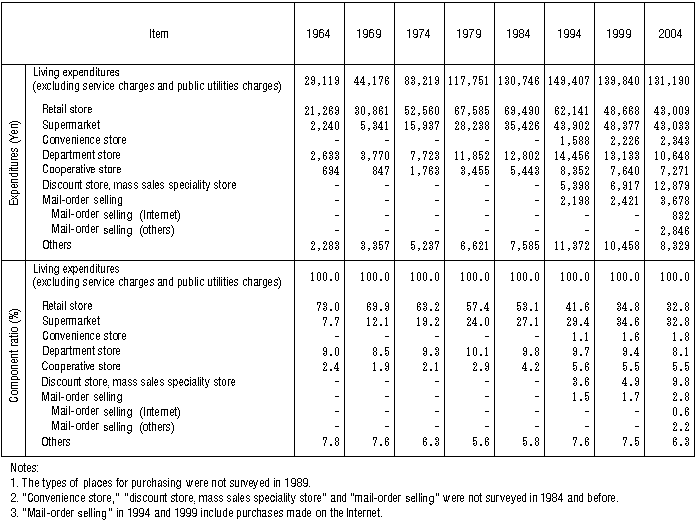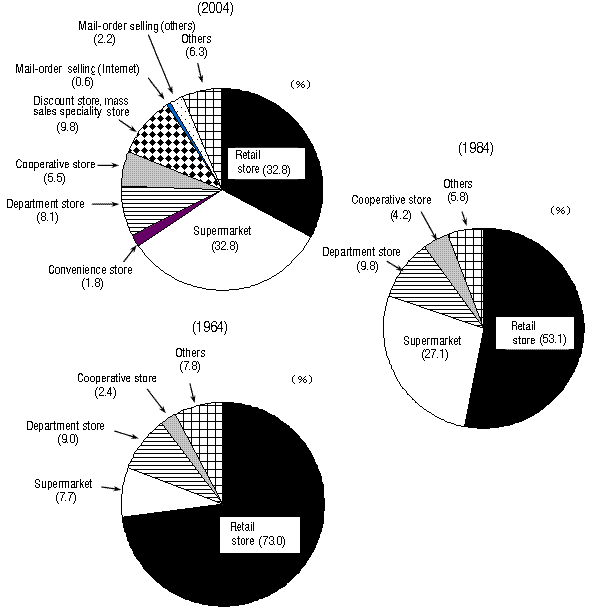Main contents start here
2. Living Expenditures by Type of Places for Purchasing
An analysis of the expenditure ratio by type of places for purchasing in living expenditures (excluding those for eating out, rent and other service charges and utilities including electricity, gas and water) shows that supermarkets and retail stores accounted for the largest part at 32.8% followed by discount stores/mass sales speciality stores at 9.8%, department stores at 8.1%, cooperative stores at 5.5%, mail-order selling (others) at 2.2%, convenience stores at 1.8% and mail-order selling (on the Internet) at 0.6%.
Purchases at retail stores consistently declined from 73.0% in 1964 to 32.8% in 2004. On the other hand, purchases at supermarkets exhibited a tendency to rise from 7.7% in 1964 to the same level as retail stores in 2004 although they somewhat declined from 1999. After surpassing 10% in 1979, purchases at department stores continued to decline to 8.1% in 2004. Purchases from cooperative stores continued to increase from 1.9% in 1969 to 5.6% in 1994 and leveled off in 2004. In addition, purchases at convenience stores, discount stores/mass sales speciality stores and mail-order selling were on the rise. (Table V-2, Figure V-3)
Table V-2: Changes in Expenditures by Type of Places for Purchasing in Living Expenditures (All Households)

Figure V-3: Ratio of Expenditures by Type of Places for Purchasing in Living Expenditures (All Households)

